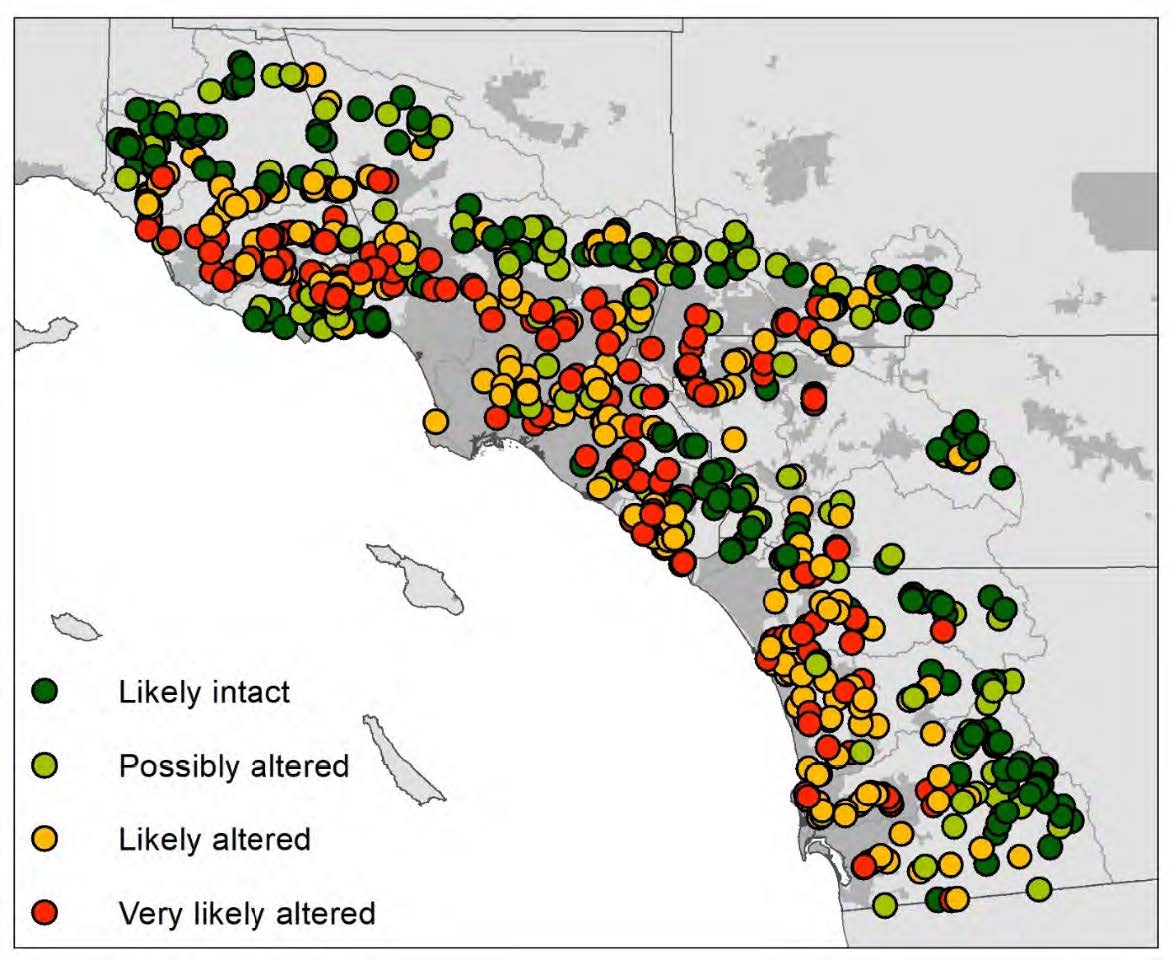Management impacts of stream biointegrity policies explored in new SMC report

The Southern California Stormwater Monitoring Coalition (SMC) has released a comprehensive new report chronicling how the region’s stream management community will potentially be impacted by new and proposed changes to statewide policies governing the health of streams.
The 2017 Report on the SMC Regional Stream Survey, published in March as an SMC technical report, is a forward-looking analysis intended to help SMC members and other stream managers prepare for anticipated changes in the regulatory landscape.
The 22-page report provides in-depth analysis of how streams in coastal Southern California are evaluated and scored using a suite of new stream monitoring tools co-developed by SCCWRP. A number of these tools form the technical backbone of stream biointegrity policies under development in California.
By showcasing how California stream biointegrity tools are applied in the South Coast region, the SMC becomes better-positioned to influence policy development and ensure Southern California stream data sets get used in the development of new stream biointegrity tools.
Prominent in the report is a detailed overview of the Algal Stream Condition Index (ASCI), a quantitative scoring tool that uses algal communities in streambeds to assess overall stream health. Expected to be released for public review this summer, the ASCI is designed to complement the already-released California Stream Condition Index (CSCI), which relies on the condition of bottom-dwelling invertebrates to score stream health. The ASCI and CSCI will provide the technical underpinnings for a proposed statewide stream biointegrity-biostimulatory policy.
The SMC’s analysis of the new ASCI scoring tool showed that in certain Southern California watersheds – such as Calleguas Creek, Lower Santa Ana and Central San Diego – few sites scored in the healthy range. These low ASCI scores could lead to increased management scrutiny over how to mitigate the factors that lead to ecologically disruptive algal growth, such as reducing nutrient inputs, the SMC concluded.
The SMC report also examined a new computer modeling tool co-developed by SCCWRP that predicts the degree to which stream biointegrity scores are likely to be limited, or “constrained,” by urban and agricultural development. The SMC’s analysis of the landscape modeling tool found that about 11% of the region’s stream-miles are likely constrained, while 12% are likely unconstrained. The SMC concluded that low-scoring stream sites that are relatively unconstrained could become strategic targets for focusing proportionately more restoration efforts and resources, with stream managers likely to get more bang for the buck at these sites.
The SMC report also chronicled a change to the way that California streams are scored and placed on a federal list of impaired California water bodies. Last year for the first time, CSCI scores were used in a consistent fashion statewide as a line of evidence to help determine placement on the list. As a result, 44 South Coast streams were designated as impaired, while another 76 South Coast streams were placed into a newly created category indicating they met all of their beneficial-use requirements.
SMC members are using the report’s findings to bring greater awareness to the management implications of new and proposed changes to statewide stream policies, enabling stream managers to more effectively plan, allocate resources and set priorities.
For more information, contact Dr. Raphael Mazor.
More news related to: Bioassessment, Indices of Biotic Integrity, Regional Monitoring, Southern California Stormwater Monitoring Coalition, Top News